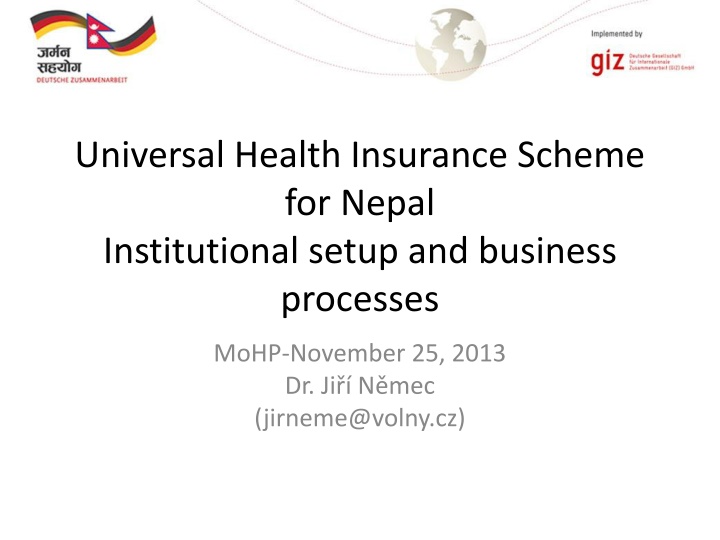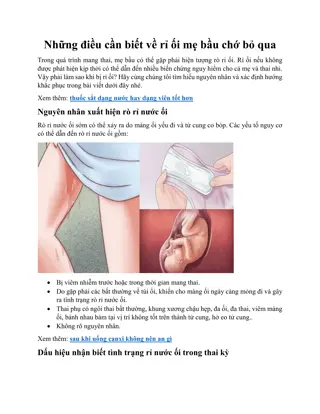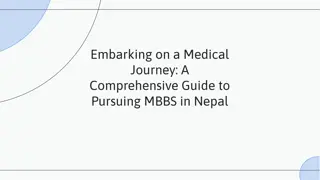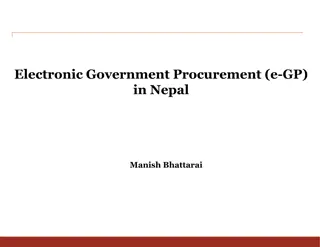
Universal Health Insurance Scheme for Nepal - Institutional Setup and Business Processes
Learn about the institutional setup and business processes of the Universal Health Insurance Scheme (UHIS) introduced in Nepal. Explore the phases of introduction, breakdown of the problem, and factors affecting the setup and processes. Get insights into the organizational structure and key stakeholders involved in the scheme.
Download Presentation

Please find below an Image/Link to download the presentation.
The content on the website is provided AS IS for your information and personal use only. It may not be sold, licensed, or shared on other websites without obtaining consent from the author. If you encounter any issues during the download, it is possible that the publisher has removed the file from their server.
You are allowed to download the files provided on this website for personal or commercial use, subject to the condition that they are used lawfully. All files are the property of their respective owners.
The content on the website is provided AS IS for your information and personal use only. It may not be sold, licensed, or shared on other websites without obtaining consent from the author.
E N D
Presentation Transcript
Universal Health Insurance Scheme for Nepal Institutional setup and business processes MoHP-November 25, 2013 Dr. Ji N mec (jirneme@volny.cz)
Agenda 1. Phases of introduction of the universal health insurance scheme in Nepal (UHIS) Institutional setup for the UHIS Business processes for the UHIS Actions to be taken for the implementation of the UHIS Information system for the UHIS 2. 3. 4. 5.
Phases of introduction of the UHIS Design phase (definition of insurance product) What health care is covered? What is cost sharing? What are other conditions (enrollment periods, waiting periods etc.)? What are contributions? What health care providers can be accessed? Implementation phase Build insurance agency and recruit workers Acquire operational information system Identify, contract and train sales network Identify, contract and train health care providers Routine phase Running of standardized business proccesses
Breakdown of the problem remuneration and prices What else care covered ? (drugs, in-patient/out-patient? What unit of health care is remunerated? benefit package Who pays contributions? Are they mean s tested? funding and contributions rates Institutional setup and operating procedures
What affects the institutional setup/ business processes the most? Enrolment/funding Explicit enrolment /individual contributions Implicit enrolment /taxed based funding Implicit enrolment /individual contributions Remuneration/invoicing No purchaser - provider split /no invoicing Purchaser - provider split /aggregate invoicing Purchaser - provider split /individual invoicing
Institutional setup Ministry of Home Affairs Ministry of Finance Ministry of Women, Children and Social Welfare Ministry of Health and Population others Control Board National Health Insurance Agency (NHIA)
Organizational structure of the NHIA Executive Director & Office Control Committee Public relations Internal audit design phase implementation phase Legal affairs routine phase Actuariy and statistics Human resources Economy and accounting Sales and marketing Insurees and policies Health care IT support Internal logistics Registration and enrolment Purchasing and supply Marketing Health care policy Accounting IT Development Health care contracting Premisses management Sales network Treasury IT Administration Health care reviewing Information Desk Cash desk IT Help Desk Transport Claim proccessing Archiving
Description of tasks and staffing (1) Section Actuary and Statistics Staff: 2-3 actuaries/statisticians and 1 administrative officer Responsibility: gathering statistics on utilization of health care assessment of expected impact of cost-sharing schemes proposing of a setup of parameters of cost-sharing schemes to be used calculation of contribution rates elaboration of actuarial/statistical reports
Description of tasks and staffing (2) Section Claims Processing Staff: 1 + (3 per 100 000 insurees) administrative officers Responsibility: taking over claims from representatives of health care providers entering claims into the information system checking correctness of claims (usually it is done automatically by the information system) selecting of claims for a medical review communicating with health care providers on problems encountered valuating of claims according to predefined rules (usually it is done automatically by the information system handing over settled claims to the archive
Decentralization of the NHIA (1) -decentralization of operations of the NHIA -decentralization of the scheme (probably not on the agenda) two tiers organization three tiers organization
Decentralization of the NHIA (1) only central level both central and district only district level
Organizational structure of a branch office
Structure and number of staff 25,000,000 10,000,000 Director 77 77 Public relation 1 1 Internal audit 6 6 Director, Audit,Public relation,Actuary and statistics. Human resources 7% Legal affairs 7.5 12.5 Actuary and statistics 4 4 IT support 0% Marketing 4 4 Internal logistsics 11% Sales/distribution 225 225 Information desk 4 6 Sales and marketing 16% Registration and enrolment 275 475 Economy and accounting 12% Health policy 6 6 Contracting 77 77 Medical reviewing 23 48 Claim processing 400 800 Accounting 94 111 Treasury 3 3 Insurees and policies 19% Cash desk 75 75 IT development 3 3 IT administration 3 3 Health care 35% Purchasing 3 3 Mangement premises 76 76 Transport 76 76 Archive 3 5 Human resources 12 18 Help desk 3 4 Total 1,461 2,119
Administration costs(1) Assumptions made: Average salary per a specialist 40,000 NPR monthly Average salary per an administrative worker 20,000 NPR monthly Average contribution rate per a household 1,500 NPR annually Average number of members per household 5 Number of district branches 75
Administration costs(2) Number of insured persons 1,000,000 5,000,000 10,000,000 20,000,000 25,000,000 Expected revenue (NPR) 300,000,000 1,500,000,000 3,000,000,000 6,000,000,000 7,500,000,000 Number of specialists 117 126.5 137 158.5 171 Salaries of specialists (NPR) 56,160,000 60,720,000 65,760,000 76,080,000 82,080,000 Number of administrative staff 763.5 1012 1323.5 1947.5 2260.5 Salaries of admin. staff (NPR) 183,240,000 242,880,000 317,640,000 467,400,000 542,520,000 Overhead costs (% of personnel costs) 20.0% 19.5% 18.9% 17.6% 17.0% Depreciated capital costs (NPR) 6,163,500 7,969,500 10,223,500 14,742,000 17,020,500 Distributioncosts (% of revenue) 4.0% 3.6% 3.2% 2.4% 2.0% Administrationcosts (% of revenue) 101.8% 28.4% 18.8% 13.3% 12.0%
Administration costs(3) Administration costs as percentage of revenue 110.0% 100.0% 90.0% 80.0% 70.0% 60.0% 50.0% 40.0% 30.0% 20.0% 10.0% 0.0% number of insurees 1,000,000 5,000,000 10,000,000 20,000,000 25,000,000
Subsidization of administration costs Amount of subsidies for administration costs (above 12 %) 300,000,000 250,000,000 Subsidization in NRP 200,000,000 150,000,000 100,000,000 50,000,000 0 number of insurees 1,000,000 5,000,000 10,000,000 20,000,000 25,000,000
How to alleviate the problem with administration costs? (1) Make the system mandatory ? high number of insured households guaranteed merging income from contributions with the contemporary public funding ensures the higher level of revenue But Is there any governmental institution capable to collect money from the whole population? Is there any rather complete register of population?
How to alleviate the problem with administration costs? (2) Don t use individualized claiming? but Individual ceilings for coverage within the health insurance scheme hardly can be used. There is not effective check of a correspondence between provided and invoiced health care.
How to alleviate the problem with administration costs? (3) Centralize operations whenever possible Administrative costs as percentage of revenue (for 10 million insurees) 20.0% 15.0% 10.0% 5.0% 0.0% number of branches 1 25 50 75
How to alleviate the problem with administration costs? (4) Streamline routine operations e.g. submission of claims electronically by health facilities Use existing (and already paid) staff central level district level Use contracted workers when it make sense
Business processes Core business processes Enrolment and collection of contributions Claim processing Renewal of policies Modification of policies Control business processes Support business processes
Decisions influencing business processes Fixed or floating period of enrolment Grace periods Contributions in instalments Waiting periods Ceilings for expenditures Ceilings for utilization Construction of contribution and new members of households during insurance period
Decisions influencing business processes Fixed or floating period of enrolment Grace periods Contributions in instalments Waiting periods Ceilings for expenditures Ceilings for utilization Construction of contribution and new members of households during insurance period
Issue: Acquiring of insurees identification and coverage Two approaches: centralized ID card of an insuree contains only his/her ID number (and name, date of birth etc.) all info on coverage even including photo is acquired from a central information system decentralized all information is at an insuree (chip card, insuree s booklet)
Issue: Acquiring of insurees identification and coverage Two approaches: centralized ID card of an insuree contains only his/her ID number (and name, date of birth etc.) all info on coverage even including photo is acquired from a central information system decentralized all information is at an insuree (chip card, insuree s booklet)
Centralized approach Enrolment Central server Data entry at the NHIA Visit to a health facility
Decentralized approach Enrolment central server Data entry and personalization of the card at the NHIA Visit to a health facility local computer
Issue: Identification number Each insuree should have an unique identification number use national identification number (Nepal ?) use specific identification number for health insurance assigned by a branch office (e.g. xxxxyyyyyyy where xxxx is a code of district, yyyyyyy is an order number) pre-printed on an enrolment form and insurance card
Example: Preprinted ID on an insurance card (Tanzania)
Description of business processes (enrolment)
Description of business processes (claim processing)
Issue: Design of claim forms -aggregated claim forms -individual claim forms -collective -separated
Actions to be taken for the implementation of the UHIS 1. Design of the scope of the benefit package 2. Design of cost-sharing scheme and 3. Elaboration of classifications for covered health care 4. Design of remuneration mechanisms and elaboration of pricelists 5. Calculation of contributions 6. Design of measures preventing adverse selection Design of the scheme Implementation of the scheme 1. Design of all forms and finalizing of operating procedures 2. Acquiring of an information system 3. Selection, contracting and training of distribution channels 4. Elaboration of guidelines for contracting of health care providers 5. Selection, contracting and training of health care providers 6. Purchasing and distribution of all equipment for external partners 7. Set-up of the full organizational structure of the NHIA 8. Preparation and launching of a marketing campaign
Issue: Insurance information system Typical structure: Health Insurance Information System can be developed as tailored made information system (around 500 men days) acquired as open source system (e.g. from Swiss Development Agency) Purchased ?






















